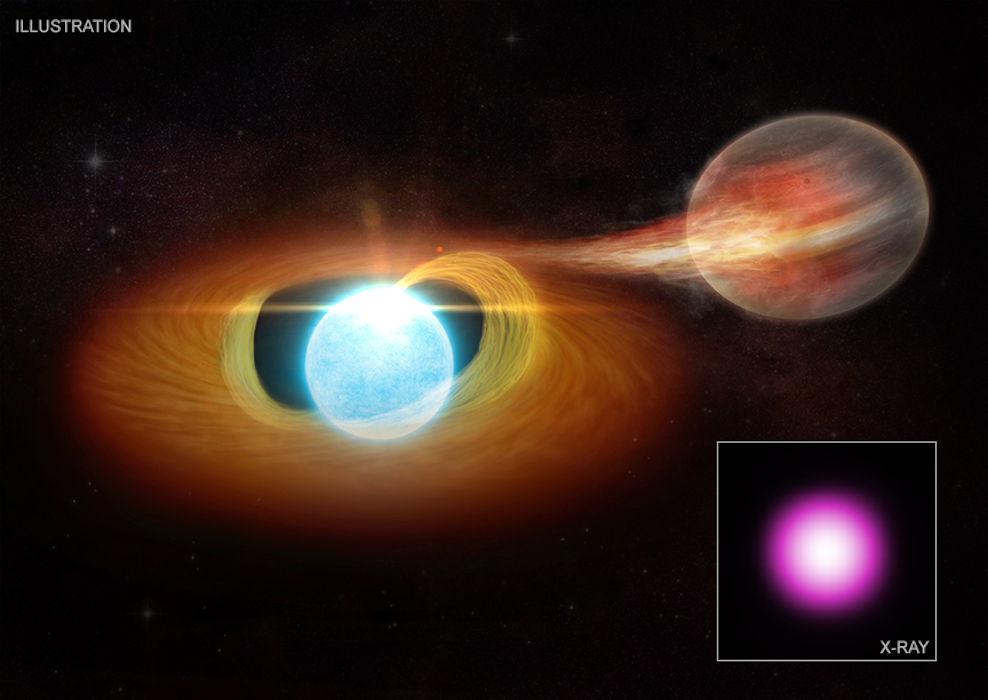
 Credit: Illustration: NASA/CXC/M. Weiss; X-ray (Inset): NASA/CXC/ASIAA/Y.-H. Chu, et al.
Credit: Illustration: NASA/CXC/M. Weiss; X-ray (Inset): NASA/CXC/ASIAA/Y.-H. Chu, et al.
Eating a Planet?
Sad to say, Earth's days are numbered. Setting aside possible, more-near term catastrophes, eventually (in about five billion years) the Sun will run out of nuclear fuel. When this happens the Sun will expand into a red giant star, swelling up to more than 150 times its present size, and swallowing Mercury and Venus, and probably Earth. Eventually the Sun will lose its outer layers, and the core of the Sun will be left behind as a white dwarf star, a dense, burnt-out cinder more than 150 smaller than its current size. We expect this scenario has occurred many many times in the Milky Way. Can we find evidence of planets still orbiting white dwarfs? Perhaps the answer is yes. X-ray studies of some white dwarfs show unusual, high energy X-ray emission. Observations of one such system, a white dwarf known as KPD 0005+5106, with the Chandra X-ray Observatory and the XMM-Newton X-ray telescope show that the high energy X-rays seem to vary with a period of about 4.7 hours. The variable X-rays are probably produced by material being accreted by the white dwarf from some close-in, low mass object, either a very low mass star or a giant planet similar to Jupiter. The image above is an illustration of a white dwarf star accreting matter from a low-mass object, while the inset shows the Chandra X-ray image of KPD 0005+5106. This may be the first evidence of a (former) star eating one of its planets.
Published: November 29, 2021
<
HEA Dictionary ● Archive
● Search HEAPOW
● Other Languages
● HEAPOW on Facebook
● Download all Images
● Education ● HEAD
>

Each week the HEASARC
brings you new, exciting and beautiful images from X-ray and Gamma ray
astronomy. Check back each week and be sure to check out the HEAPOW archive!
Page Author: Dr. Michael F. Corcoran
Last modified Monday, 26-Feb-2024 17:22:04 EST


